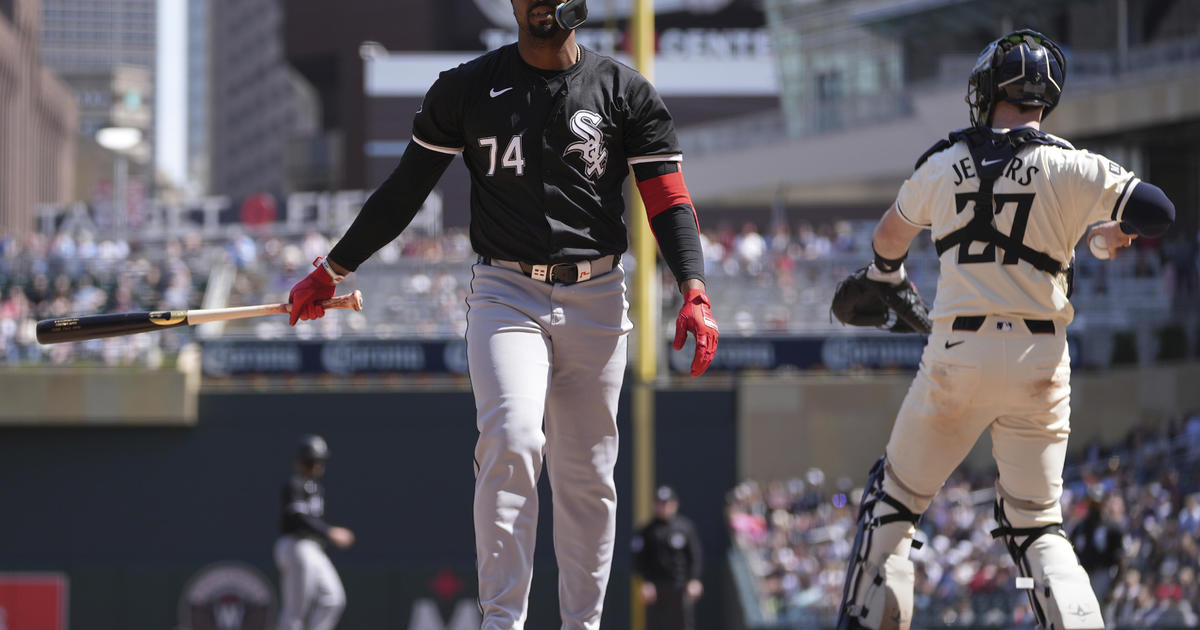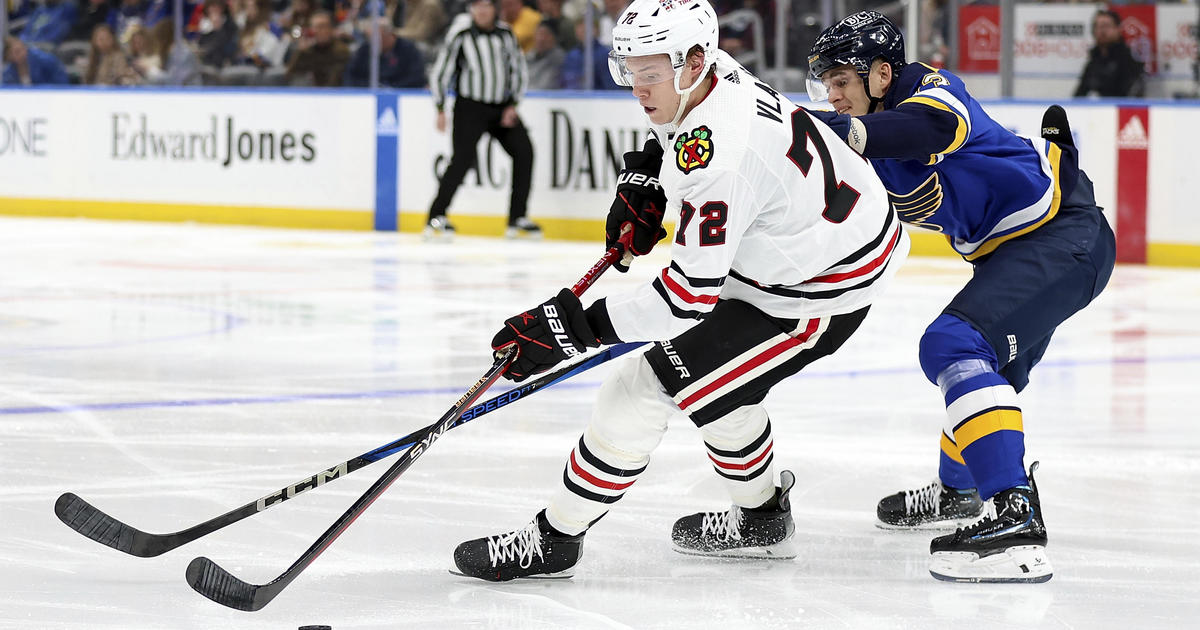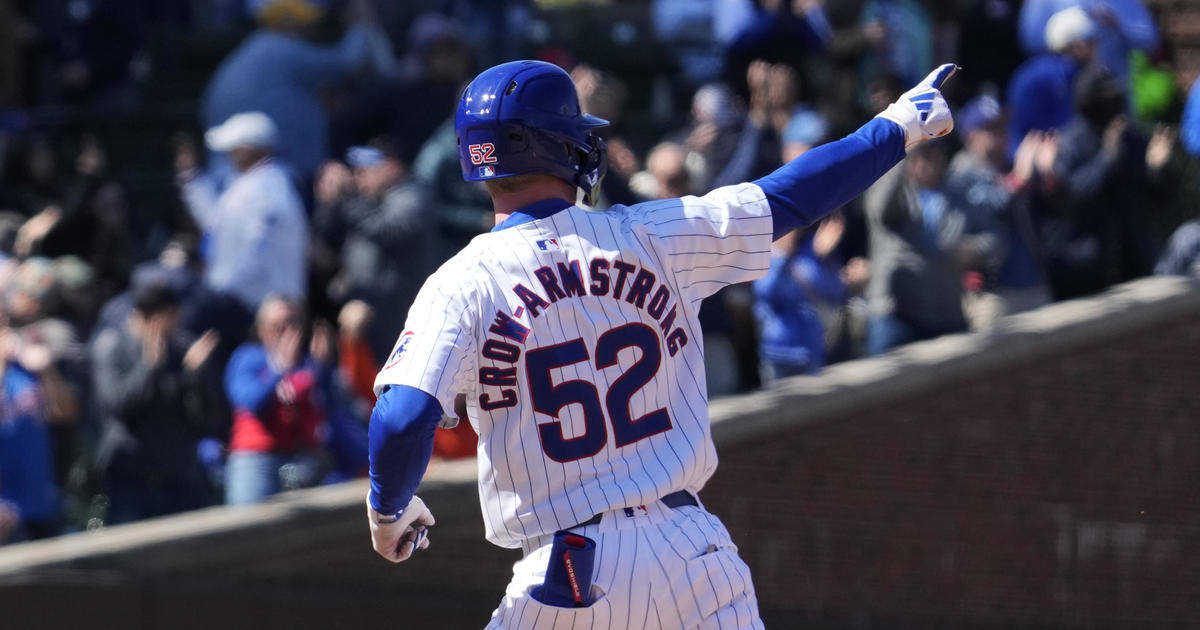Emma: 5 All-Star Break Metrics For Chicago Baseball
By Chris Emma--
(CBS) It's been a tale of two seasons in Chicago this baseball season.
On the North Side, the Cubs stand at 47-40 at the All-Star break and have exceeded expectations, for the most part. They currently hold a wild-card position but still have much to improve in the second half.
For the White Sox, the 41-45 record may not be indicative of the frustration endured to this point. General manager Rick Hahn was extraordinarily aggressive during the offseason, but now he must determine the direction for the 2015 season -- and, in turn, the franchise's future.
Important moves loom as Chicago's two teams look ahead to the future. At this point in the season, numbers aren't trends. They're realities -- especially the revealing sabermetrics, which expose a team's overall performance.
Let's look at some of the significant numbers and what they mean to the first half of Chicago baseball.
Note: All statistics come courtesy of Fangraphs.
1.) Cubs must be better with the bats
Battling the daunting NL Central and a learning curve, the Cubs are still a playoff team at the All-Star break. The pitching has been terrific -- their expected fielding independent pitching (xFIP) is 3.34, second in baseball -- and defense has been sound, but the position players must improve.
The Cubs' positional player wins above replacement (WAR) stands at 11.0, rankings 13th in baseball. Within that mark, Kris Bryant and Anthony Rizzo have combined for a 7.1 WAR, meaning the rest of the lineup is just 3.9 wins above replacement. Starlin Castro, a player who was supposed to be a key part of the team's success, has a -0.4 WAR (more on Castro below).
Beyond that, the Cubs have a .300 batting average on balls in play but a .239 team average and 24.1 strikeout rate. Fortunately, the strikeouts have decreased as the young players adjust to major league pitching, but the Cubs still aren't scoring runs at a successful rate. Their weighted runs created (wRC+) is 89, ranking 24th in baseball. The Cubs need to score more runs to reach the heights they desire, and that will come over time as the youngsters grow. The question is simply, how soon?
2.) Chris Sale has been spectacular
Every time Chris Sale takes the bump, it's appointment television. His dominance this season has matched records and drawn comparisons to Randy Johnson. Frankly, he's deserving of the AL Cy Young at this pace. Those eight consecutive games of 10 strikeouts drew the headlines, but the metrics reveal how dominant he has truly been.
Following a slow start recovering from an offseason injury, Sale has become arguably the best pitching in baseball. He has a 4.1 WAR (second to only Max Scherzer), leads the majors with 11.84 strikeouts per nine innings, carries a fielding independent pitching (FIP) of 2.21 (trailing only Scherzer for the league lead) and induced an MLB-leading 318 swings and misses.
One more fun Sale stat: Rookies Bryant, Joey Gallo and Byron Buxton have combined to go 0-for-13 with 13 strikeouts against Sale. Welcome to the big leagues -- meet one of the best pitchers in the game.
3.) Acing and bracing
Jon Lester was paid $155 million to be the Cubs' ace. Jake Arrieta was brought to Chicago as a throw-in for the Scott Feldman deal with Baltimore. But baseball's an unpredictable game, and the Cubs' two top pitchers have both submitted quality performances in their own way.
Arrieta has been one of the best pitchers in baseball, making his All-Star snub laughable. His 3.4 WAR is fifth in the game, as is his 2.60 FIP. His groundball rate is a spectacular 50.4 percent. With a dedicated workout routine and discipline with his body, Arrieta has become an elite pitcher.
As for Lester, many fans will judge the ace by his 4-8 record and 3.59 ERA, but both of those statistics don't accurately reflect a pitcher's individual efforts. Lester carries a 3.14 xFIP and a career-worst opponent's .316 BABIP, meaning he has encountered a lot of bad luck. However, Lester has been better in the second half of the season in recent years, and the numbers indicate he will improve. If he can be Arrieta-like, that's good news for the Cubs.
4.) White Sox still below replacement level
Perhaps the White Sox are coming around, showing positive signs of more consistent baseball during their 9-3 stretch just before the break. The defense was more sound, and the bats managed timely hits to back the club's terrific pitching. But as a whole, the White Sox's position players have dramatically underachieved this season.
The White Sox have produced a cumulative positional player WAR of -3.7, meaning they are well below replacement level and dead last in the majors. By comparison, the Phillies are 29th place with a positive 1.7 WAR, and the A.L. Central-leading Royals have a 16.3 WAR. In addition, the White Sox are last in baseball with 77 wRC+ and a -4.7 ultimate base running (UBR). They are also 29th with -43 mark in defensive runs saved.
Dominant pitching from the White Sox has helped keep the team close to the .500 mark, and perhaps the position players have made improvements to help earn wins. But the overall numbers from the first half are frustrating, to say the least.
5.) Searching for Starlin
The Cubs boast three young shortstop for two middle infield positions. Addison Russell appears to be untouchable and could be the everyday shortstop for the future. Javier Baez is working his way back from injury at Triple-A Iowa with the hopes of contributing to the big league club this year. So what happens with Castro? That remains an unknown during his severe struggles.
Castro has a -0.4 WAR, trailing the likes of Junior Lake, Matt Szczur and Taylor Teagarden. This is from a three-time All-Star and a player on pace for 3,000 hits. Castro has career-worst numbers in weighted on-base (wOBA) with .264 and OPS at a meager .603. He's a -1 in defensive runs saved and even 0.0 in ultimate zone rating (UZR), both career-best numbers but marginal improvements for a player who has struggled defensively.
But Castro's bat has been the greatest concern, because he's never been a plus defensive player. At age 25, the hitting statistics were supposed to be more consistent. Last season, he had a career-high OPS at .777 and wRC+ with 115, but he's seen a considerable drop-off offensively.
If the Cubs hope to compete for a World Series in 2015 and certainly the years that follow, Castro needs to be make major improvements. Replacement-level production would be a start.
Follow Chris on Twitter @CEmma670.



